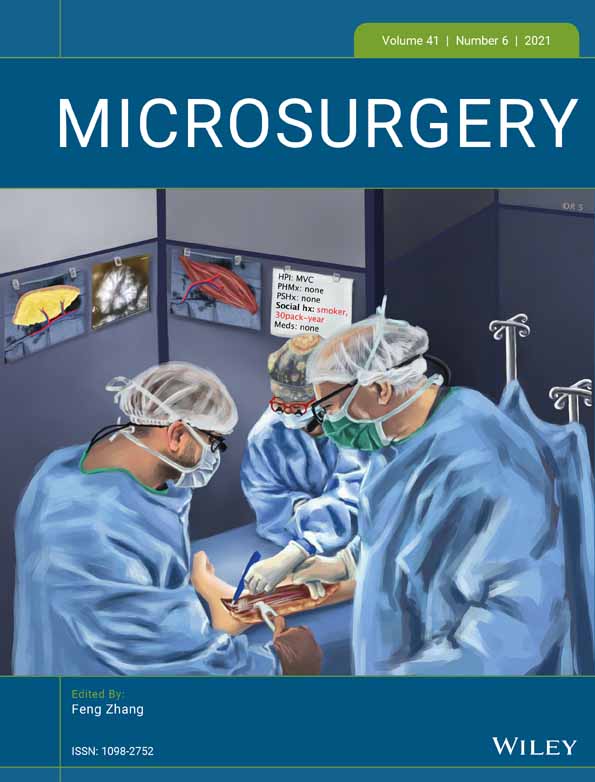Neurotized free VRAM used to create myoelectric signals in a muscle-depleted area for targeted muscle reinnervation for intuitive prosthesis control: A case report
Abstract
Targeted muscle reinnervation enables native muscles to send electromyographic signals to myoelectric receptors, which drive movements in a prosthesis. This system requires voluntary contracture of muscles for sequential control of powered prosthetic joints. This report describes a surgical solution for cases where the chest wall is depleted of muscle targets. A 13-year-old boy with left forequarter amputation and pectoralis major resection as a result of extended necrotizing facilities 8 years prior received a neurotized free Vertical Rectus Abdominus Mycocutaneous (VRAM) flap (28 × 10 cm) designed to produce myoelectric signals, reduce pain, and provide stability for prosthetic fitting. Five intercostal nerves from the VRAM were coapted to portions of the brachial plexus to create a myoelectric interface for targeted muscle reinnervation. The postoperative course was uneventful. At 39 months of follow-up, the patient gained control of the transferred VRAM and was able to operate a custom-fitted myoelectric prosthesis together with contraction of the ipsilateral infraspinatus muscle. The neurotized VRAM transfer created a neural interface in an area with depleted neuromuscular targets while decreasing pain and adding tissue bulk for proper prosthesis fitting. Such a surgical strategy may have applications in other areas of the body.
Open Research
DATA AVAILABILITY STATEMENT
All data generated or analyzed during this study are included in this published article.




